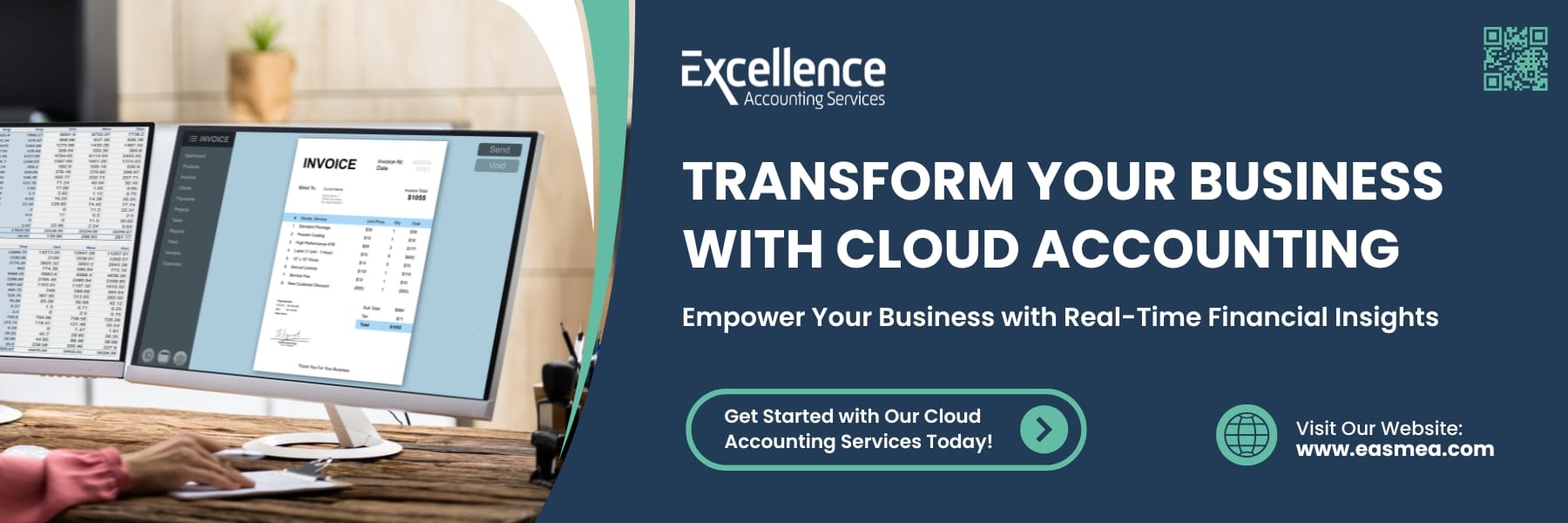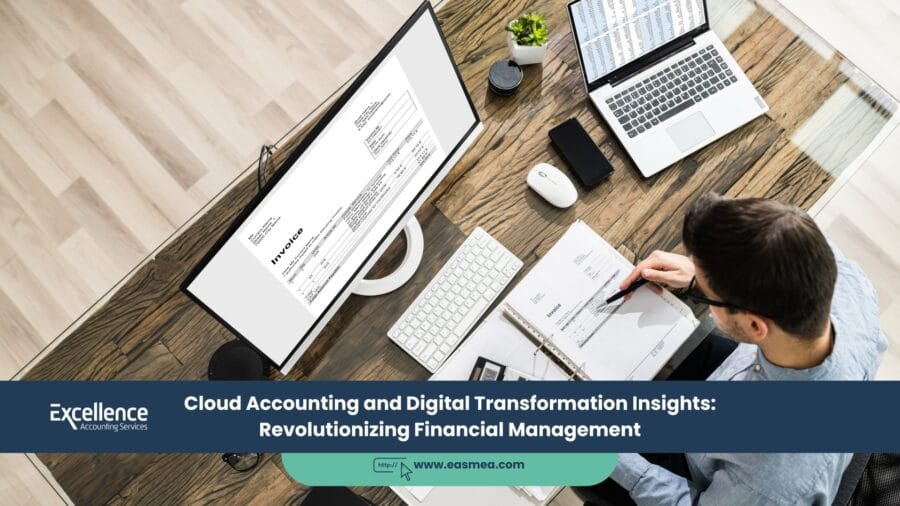The Rise of Cloud Accounting
Cloud accounting has emerged as a powerful solution for businesses of all sizes, offering numerous advantages over traditional on-premises accounting systems. As we delve deeper into this technology, it’s essential to understand its core principles and the impact it’s having on financial management.What is Cloud Accounting?
Cloud accounting, also known as online accounting or web-based accounting, refers to the practice of using accounting software that is hosted on remote servers. Instead of installing and maintaining software on individual computers or a local server, users can access the software and their financial data through the internet.This shift from traditional, locally-installed software to cloud-based solutions has been transformative for the accounting industry, offering unprecedented flexibility, accessibility, and scalability.
Key Benefits of Cloud Accounting
- Cost Savings: Cloud accounting significantly reduces upfront costs associated with hardware and software purchases. It also eliminates the need for in-house IT support for maintenance and updates.
- Scalability: As businesses grow, cloud accounting solutions can easily scale to accommodate increased data volume and user numbers without the need for significant infrastructure changes.
- Real-Time Access to Financial Data: Cloud accounting provides instant access to up-to-date financial information from anywhere with an internet connection, enabling faster decision-making and more agile business operations.
- Improved Collaboration: Multiple users can access and work on the same data simultaneously, enhancing teamwork and streamlining processes between departments and with external stakeholders like accountants or auditors.
- Enhanced Security: Reputable cloud providers invest heavily in security measures, often providing a level of data protection that surpasses what most small to medium-sized businesses could implement on their own.
- Automatic Updates and Backups: Cloud accounting software is automatically updated by the provider, ensuring users always have access to the latest features and security patches. Regular automated backups protect against data loss.
- Integration Capabilities: Many cloud accounting solutions offer seamless integration with other business tools and applications, creating a more cohesive and efficient business ecosystem.
According to a report by Nucleus Research, cloud applications deliver 4.01 times the ROI compared to on-premises solutions. This significant difference underscores the financial benefits of adopting cloud-based accounting systems.
Cloud Accounting vs. Traditional Accounting
To better understand the advantages of cloud accounting, let’s compare it to traditional accounting methods:| Feature | Cloud Accounting | Traditional Accounting |
|---|---|---|
| Accessibility | Anywhere, anytime via internet | Limited to office or specific computers |
| Cost | Lower upfront costs, subscription-based | Higher initial investment, ongoing maintenance costs |
| Scalability | Easily scalable to business needs | Limited scalability, may require hardware upgrades |
| Updates | Automatic, managed by provider | Manual, often costly and time-consuming |
| Data Security | Advanced, managed by provider | Dependent on in-house IT capabilities |
| Collaboration | Real-time, multi-user access | Limited, often siloed between departments |
| Data Backup | Automatic, regular backups | Manual, prone to human error |
| Integration | Easy integration with other cloud services | Limited integration capabilities |
| Mobile Access | Native mobile apps and responsive web interfaces | Limited or no mobile access |
| Real-time Reporting | Up-to-date financial data always available | Periodic reporting, often delayed |
Case Study: Small Business Success with Cloud Accounting
To illustrate the real-world impact of cloud accounting, consider the case of Rana Boutique, a small fashion retailer with three physical stores and an e-commerce presence.Before adopting cloud accounting:- Monthly financial close took 2 weeks
- Inventory management was manual and error-prone
- Real-time financial data was unavailable, leading to delayed decision-making
- Collaboration between store managers and the central office was challenging
- Monthly close reduced to 3 days
- Integrated inventory management provided real-time stock levels across all channels
- Management had instant access to sales and profitability data, enabling agile business decisions
- Store managers could input data directly, improving accuracy and collaboration
Digital Transformation in Accounting
Digital transformation goes beyond mere digitization or automation of existing processes. It involves fundamentally rethinking how an organization uses technology, people, and processes to radically change business performance. In the context of accounting, digital transformation is revolutionizing how financial data is collected, processed, analyzed, and reported.Key Areas of Digital Transformation in Accounting
- Automation of Manual Tasks: Robotic Process Automation (RPA) and other automation tools are eliminating repetitive, rule-based tasks such as data entry, reconciliations, and report generation.
- Data Analytics and Insights: Advanced analytics tools are enabling accountants to derive deeper insights from financial data, moving beyond retrospective reporting to predictive and prescriptive analytics.
- Artificial Intelligence Integration: AI is being used for tasks ranging from anomaly detection in financial transactions to intelligent chatbots for customer service in financial applications.
- Blockchain Technology: While still in early stages for many businesses, blockchain has the potential to revolutionize areas like auditing, supply chain finance, and secure financial transactions.
- Real-Time Reporting and Compliance: Digital transformation enables continuous accounting and real-time financial reporting, improving decision-making capabilities and ensuring ongoing compliance with regulatory requirements.
- Enhanced Customer Experience: Digital tools are improving how businesses interact with customers in financial matters, from self-service portals to personalized financial advice powered by AI.
- Internet of Things (IoT) in Accounting: IoT devices are beginning to play a role in areas like asset tracking and automated expense reporting.
A study by Sage found that 67% of accountants believe that real-time accounting data improves decision-making and provides a competitive advantage. This underscores the importance of digital transformation in providing timely, actionable financial insights.
The Digital Transformation Journey in Accounting
Digital transformation is not a one-time event but a continuous process. Here’s a typical journey for an organization undergoing digital transformation in its accounting processes:- Assessment: Evaluate current processes, technologies, and pain points.
- Strategy Development: Create a roadmap for digital transformation aligned with business goals.
- Technology Selection: Choose appropriate digital tools and platforms.
- Implementation: Deploy new technologies and processes, often in phases.
- Training and Adoption: Ensure staff are trained and comfortable with new systems.
- Continuous Improvement: Regularly assess and refine digital processes.
Traditional vs. Digitally Transformed Accounting Processes
| Process | Traditional Approach | Digitally Transformed Approach |
|---|---|---|
| Data Entry | Manual input of transactions | Automated data capture (e.g., OCR, bank feeds) |
| Reconciliation | Manual matching of transactions | AI-powered automatic reconciliation |
| Financial Close | Monthly or quarterly process | Continuous close with real-time updates |
| Reporting | Static, periodic reports | Dynamic, real-time dashboards |
| Audit | Sample-based, periodic audits | Continuous auditing with full data analysis |
| Compliance | Reactive approach to regulatory changes | Proactive compliance with real-time monitoring |
| Forecasting | Based on historical data and manual projections | AI-driven predictive analytics |
| Customer Interactions | Phone or email-based support | Self-service portals and AI chatbots |
The Impact of Cloud Accounting and Digital Transformation
The adoption of cloud accounting and broader digital transformation initiatives is having a profound impact on businesses and the accounting profession. Let’s explore these impacts in more detail:Enhanced Efficiency
Cloud-based platforms and digital tools streamline workflows, minimizing repetitive manual processes and enabling faster, more powerful decision-making. This efficiency gain is not just about speed; it’s about freeing up human resources to focus on higher-value activities.Example: An accounts payable process that previously required manual data entry, physical approval signatures, and manual payment processing can be transformed into an automated workflow. Invoices are digitally captured, routed for approval based on predefined rules, and payments are processed automatically, all while maintaining a clear audit trail.Improved Accuracy
Automation reduces human error in data entry and processing, leading to more accurate financial reporting and analysis. This improved accuracy has far-reaching implications, from better decision-making to reduced compliance risks.Case Study: A mid-sized manufacturing company implemented an AI-powered system to review and categorize expenses. The system flagged unusual transactions and patterns, leading to the discovery of a significant billing error by a supplier that had gone unnoticed for months. This discovery resulted in a cost saving of over $100,000.Strategic Role of Accountants
As routine tasks become automated, accountants are evolving into strategic advisors, focusing on data analysis and business insights. This shift requires accountants to develop new skills and embrace a more proactive role in business strategy.Skills for the Digital Age Accountant:- Data analysis and interpretation
- Strategic thinking and business acumen
- Technology proficiency
- Communication and advisory skills
- Continuous learning mindset
Continuous Visibility
Real-time access to financial data allows for proactive monitoring and timely addressing of issues or opportunities. This continuous visibility enables businesses to be more agile and responsive to market changes.Example: A retail chain uses real-time sales and inventory data from its cloud accounting system to make dynamic pricing decisions and optimize stock levels across multiple locations, leading to improved profit margins and reduced waste.Enhanced Collaboration
Cloud-based systems and digital tools facilitate better collaboration both within the finance team and across different departments. This improved collaboration leads to more integrated business processes and decision-making.Scenario: A marketing team planning a new campaign can access real-time budget data and ROI metrics from previous campaigns, enabling them to make more informed decisions about resource allocation.Scalability and Flexibility
Cloud accounting and digital transformation provide businesses with the ability to scale their financial operations up or down quickly, adapting to changing business needs without significant infrastructure investments.Example: A rapidly growing startup was able to scale its financial operations from handling hundreds of transactions per month to tens of thousands without any significant disruption or additional hiring, thanks to its cloud-based accounting system.Challenges and Considerations
While the benefits of cloud accounting and digital transformation are significant, organizations must also be aware of potential challenges:- Data Security Concerns: While cloud providers often offer robust security measures, businesses must ensure they understand and are comfortable with how their financial data is protected.Mitigation: Choose reputable providers with strong security credentials, implement strong access controls, and train staff on security best practices.
- Integration with Existing Systems: Ensuring new cloud-based or digital systems work seamlessly with existing software can be challenging.Mitigation: Conduct thorough compatibility assessments before implementation and consider phased approaches to integration.
- Staff Training and Adaptation: Transitioning to new systems and processes requires significant change management and training efforts.Mitigation: Develop comprehensive training programs and provide ongoing support to ensure smooth adoption.
- Compliance with Regulations: Ensuring that new digital processes comply with relevant accounting and data protection regulations is crucial.Mitigation: Stay informed about regulatory requirements and choose solutions that offer compliance features relevant to your industry and region.
- Choosing the Right Solutions: With a plethora of cloud accounting and digital transformation tools available, selecting the right ones for your business can be overwhelming.Mitigation: Clearly define your requirements, involve key stakeholders in the selection process, and consider seeking advice from technology consultants.
- Data Migration: Moving historical financial data to new systems can be complex and time-consuming.Mitigation: Plan data migration carefully, considering data cleaning and validation processes, and potentially engaging specialists for large or complex migrations.
- Dependency on Internet Connectivity: Cloud-based systems require reliable internet access to function effectively.Mitigation: Ensure robust internet connectivity and consider backup internet solutions for critical operations.
Future Trends in Cloud Accounting and Digital Transformation
As technology continues to evolve, several trends are shaping the future of cloud accounting and digital transformation in finance:- Increased AI and Machine Learning Integration: AI will become more sophisticated in areas like predictive analytics, anomaly detection, and automated decision-making.Example: AI-powered systems that can predict cash flow issues or detect potential fraud patterns with high accuracy.
- Expansion of Blockchain in Financial Transactions: Blockchain technology will likely see wider adoption for secure, transparent financial transactions and smart contracts.Potential Application: Automated, blockchain-based reconciliation processes between businesses, reducing disputes and streamlining settlements.
- Growth of Predictive Analytics: Advanced predictive models will enable more accurate forecasting and scenario planning.Example: Systems that can predict the financial impact of various business decisions or market changes with a high degree of accuracy.
- Enhanced Customization and Personalization: Cloud accounting solutions will offer more tailored experiences based on industry, company size, and specific user roles.Scenario: Accounting dashboards that automatically adjust to show the most relevant KPIs based on the user’s role and current business priorities.
- Greater Focus on Cybersecurity: As financial systems become more digital, cybersecurity will become an even more critical aspect of accounting technology.Trend: Integration of advanced threat detection and prevention measures directly into accounting software.
- Augmented Reality in Financial Analysis: AR could provide new ways to visualize and interact with financial data.Potential Use: AR interfaces that allow users to manipulate 3D representations of financial data for more intuitive analysis.
- Voice-Activated Accounting: Voice recognition technology could enable hands-free data entry and querying of financial information.Example: Accountants using voice commands to generate reports or enter transaction data.
- Continuous Accounting: The concept of real-time, ongoing accounting processes will continue to evolve, potentially eliminating traditional period-end closes.Impact: Financial statements that are always up-to-date, enabling continuous auditing and real-time financial management.
Implementing Cloud Accounting and Digital Transformation: A Roadmap
For businesses looking to embark on their cloud accounting and digital transformation journey, here’s a step-by-step roadmap:- Assess Current State:
- Evaluate existing accounting processes and systems
- Identify pain points and inefficiencies
- Determine key objectives for digital transformation
- Develop a Strategy:
- Define clear goals and KPIs for the transformation
- Create a phased implementation plan
- Align the strategy with overall business objectives
- Choose the Right Solutions:
- Research available cloud accounting and digital tools
- Evaluate options based on features, scalability, integration capabilities, and cost
- Consider proof-of-concept trials for key solutions
- Prepare for Implementation:
- Plan data migration strategy
- Develop a change management plan
- Allocate resources for implementation and training
- Implement in Phases:
- Start with core accounting functions
- Gradually introduce more advanced features and integrations
- Continuously gather feedback and adjust as needed
- Train and Support Staff:
- Provide comprehensive training on new systems and processes
- Offer ongoing support and resources
- Encourage a culture of continuous learning and adaptation
- Monitor and Optimize:
- Regularly review system performance and user adoption
- Gather metrics on efficiency improvements and ROI
- Continuously refine processes and explore new features or integrations
- Stay Informed and Adapt:
- Keep abreast of new developments in cloud accounting and digital technologies
- Regularly reassess your digital strategy to ensure it remains aligned with business needs and technological advancements
- Assess your current accounting processes and identify areas for improvement
- Research cloud accounting solutions that fit your specific business needs
- Consult with digital transformation experts to develop a tailored strategy
- Develop a phased implementation plan that minimizes disruption to your operations
- Invest in training your team on new technologies and processes to ensure successful adoption
FAQs related to Cloud Accounting
Cloud accounting is a method of managing financial data and processes using internet-based software. It allows users to access financial information from any device with an internet connection, providing real-time updates and collaboration capabilities.
- The Rise of Cloud Accounting
- What is Cloud Accounting?
- Key Benefits of Cloud Accounting
- Cloud Accounting vs. Traditional Accounting
- Case Study: Small Business Success with Cloud Accounting
- Digital Transformation in Accounting
- Key Areas of Digital Transformation in Accounting
- The Digital Transformation Journey in Accounting
- Traditional vs. Digitally Transformed Accounting Processes
- The Impact of Cloud Accounting and Digital Transformation
- Enhanced Efficiency
- Improved Accuracy
- Strategic Role of Accountants
- Continuous Visibility
- Enhanced Collaboration
- Scalability and Flexibility
- Challenges and Considerations
- Future Trends in Cloud Accounting and Digital Transformation
- Implementing Cloud Accounting and Digital Transformation: A Roadmap
- FAQs related to Cloud Accounting
Unlike traditional accounting software installed on local computers, cloud accounting solutions are hosted on remote servers, offering greater flexibility, accessibility, and scalability.
Digital transformation in accounting brings numerous benefits:
- Automates manual tasks, reducing errors and freeing up time for strategic work
- Improves data accuracy through automated data entry and reconciliation
- Enables real-time reporting and analysis, supporting faster decision-making
- Enhances collaboration between team members and departments
- Allows accountants to focus on high-value advisory roles rather than routine data processing
- Improves customer service through self-service portals and faster response times
- Increases security and compliance through advanced data protection measures
- Facilitates scalability, allowing accounting practices to grow without proportional increases in overhead.
Yes, cloud accounting can be very secure when implemented correctly. Reputable providers use advanced security measures, including:
- Data encryption both in transit and at rest
- Regular security audits and penetration testing
- Multi-factor authentication
- Strict access controls and user permissions
- Automated backups and disaster recovery procedures
- Compliance with industry standards like SOC 2 and ISO 27001
However, it’s crucial for businesses to choose a trusted provider, implement strong internal security policies, and train staff on best practices for data security.
Cloud accounting enhances collaboration in several ways:
- Multiple users can access and work on financial data simultaneously from different locations
- Real-time updates ensure all users are working with the most current information
- Role-based access controls allow for secure sharing of data with relevant stakeholders
- Integration with other cloud-based tools facilitates seamless data flow between departments
- Improved communication features within the software, such as commenting and tagging
- Easy sharing of reports and dashboards with clients or management
- Mobile access enables collaboration on-the-go.
AI is playing an increasingly significant role in accounting digital transformation:
- Automating routine tasks like data entry and reconciliation
- Detecting anomalies and potential fraud in financial data
- Providing predictive analytics for cash flow forecasting and budget planning
- Offering intelligent insights and recommendations based on financial data analysis
- Enhancing customer service through AI-powered chatbots and virtual assistants
- Improving audit processes by analyzing entire datasets rather than samples
- Assisting in complex tax calculations and compliance checks
- Personalizing financial reports and dashboards based on user preferences and roles.
Small businesses can gain significant advantages:
- Lower upfront costs compared to traditional accounting software
- Access to enterprise-level features without need for extensive IT infrastructure
- Improved cash flow management through real-time financial visibility
- Enhanced ability to work with remote teams or external accountants
- Scalability to support business growth without major system changes
- Time savings through automation of routine tasks
- Better decision-making with access to up-to-date financial data and analytics
- Improved accuracy in financial reporting and tax compliance
Key challenges include:
- Resistance to change from staff accustomed to traditional methods
- Data migration complexities, especially for businesses with long historical records
- Integration issues with existing systems and processes
- Ensuring data security and compliance with regulations
- Selecting the right solutions from a vast array of options
- Training staff on new systems and processes
- Managing the transition period to minimize disruption to operations
- Potential internet connectivity issues affecting access to cloud-based systems
Cloud accounting is transforming the accountant’s role:
- Shift from data entry and processing to data analysis and interpretation
- Greater focus on strategic advisory services to clients
- Need for enhanced technology skills to leverage cloud and digital tools effectively
- More time for value-added activities like financial planning and risk management
- Increased ability to serve clients remotely and collaborate in real-time
- Greater emphasis on continuous learning to keep up with technological advancements
- Evolution towards becoming a business partner rather than just a number cruncher
Key considerations include:
- Scalability to accommodate business growth
- Integration capabilities with other business systems
- Security features and compliance with relevant regulations
- User-friendliness and intuitiveness of the interface
- Mobile access and functionality
- Reporting and analytics capabilities
- Customer support and training resources
- Pricing structure and total cost of ownership
- Vendor reputation and financial stability
- Specific features relevant to your industry or business model
Businesses can measure ROI through various metrics:
- Time saved on routine accounting tasks
- Reduction in errors and associated costs
- Improved cash flow through better invoicing and collection processes
- Cost savings from reduced need for physical storage and manual data entry
- Increased productivity of accounting staff
- Faster financial close times
- Improved decision-making leading to better business outcomes
- Customer satisfaction improvements due to faster and more accurate financial information
- Reduction in audit costs and time
- Ability to scale operations without proportional increases in accounting costs




